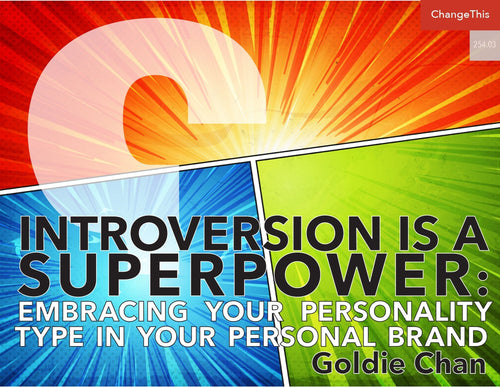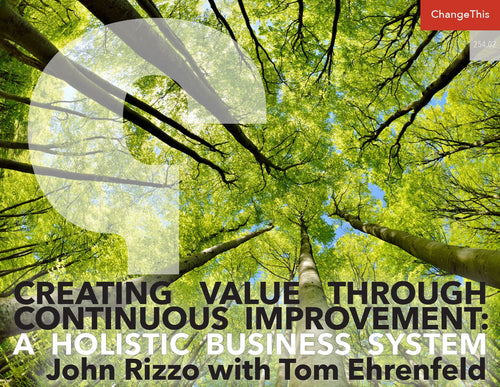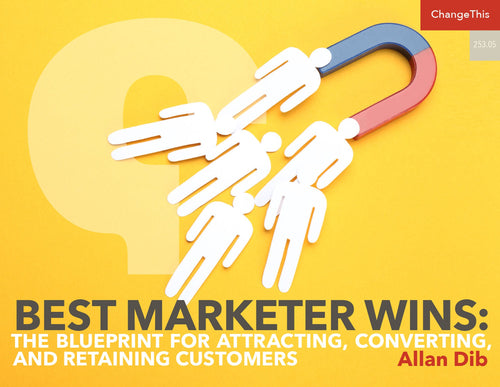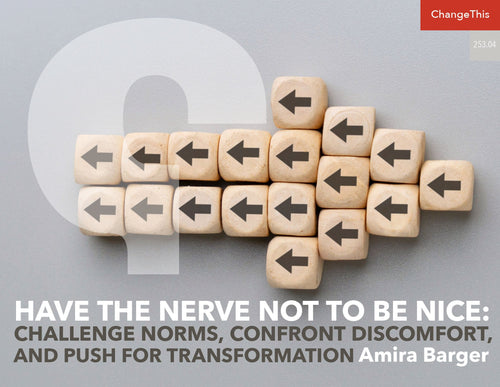Writing a WOC-Centered Definition of Power
Many women of color are stuck between knowing we see power differently, and at the same time being told that, in order to be successful, we have to wield power in an assertive, maybe even aggressive, way. In our capitalist society, where white men have gained advantage and wealth by exerting power over others, we have been taught that this is the path to success. In order to be successful, we are told we must be competitive. We have never been shown a different corporate playbook. As one woman I met described it, “the trappings of success” have been packaged so well that it’s hard not to desire them or want to go after them.
Most of the WOC I met don’t want to play the “old game” of power—a game that is based on the ideas of scarcity, competition, and winner takes all. One woman I met said, “2020 showed us that white men’s definition of power is crumbling around us.” Those ideals and models fell short as we faced challenges of a global health pandemic and renewed openness around concepts of equity and access.
More people, and especially the WOC I met, aren’t interested in gaining the type of power where only certain groups have access to resources. We see that power is found not only at the top of our companies. We each inherently have power within us.
I want to suggest a new list of rules for the “game of power” that actually works for us. A list that allows us to rewrite power so more of us are interested in aspiring to wield it, instead of shying away from it. A list that represents new power.
As I was researching traditional power, I often saw it talked about in four ways:
- Power over—power that is based on domination and control
- Power within—power related to self-worth
- Power to/for—power that creates or achieves a result or goal
- Power with—shared power that grows collaboratively and with others
Have you seen MC Escher’s black-and-white optical illusion paintings? In Day and Night, one of these famous prints, a flock of white birds are flying east and a flock of black birds are flying west.
Many people will look at the picture and see only one set of birds, but the rare viewer will see both vantage points.
Women of color are these rare viewers; we are the only ones who are not confined to a limited perspective. Our wide lens and depth of perception can paint a new path forward that isn’t constrained by what has been and what we only see around us. Women of color have the distinct advantage of being able to see through constructs that do not work (and never have). We can begin to write the new rules of power. Based on the ideas above, here are our first four rules:
RULE #1: “POWER OVER” IS OVER.
Our first rule must be that power over others is an old way of thinking about power, and we want a new one. In contemporary culture, power has been portrayed as aggressive and assertive. That perspective isn’t appealing or desirable to most WOC. When we emulate that definition, it’s almost impossible for us to feel whole, aligned, or powerful.
Stacy Brown-Philpot, a Black executive and former CEO of TaskRabbit, shared a heartwarming story when I asked her how she defines power. She shared that her oldest daughter, Emma, was recently tasked with writing about a hero for Girl Scouts. Stacy assumed she would write about Vice President Kamala Harris or Michelle Obama. Instead, Emma wrote about how Stacy is her hero because she helps her with math homework and is patient with her. For Stacy, this is a perfect example of her definition of new power. “Power isn’t about how many people report to you, or a level or role,” she says. “It’s the things you do for the people that matter most and the ways we can show we care.”
Stacy also shared that her family just got a new puppy, Fifi. To Fifi, Stacy is the alpha, not because she is the loudest or most aggressive, but because she most embodies stability and quietude within her family. Both of us talked about whether power and leadership should actually be defined by the presence and safety you bring. I love the idea that power needs to be coupled with safety, and that the leaders we gravitate toward should make us feel less guarded.
We have other models and examples of power available to us, but we don’t always think of bringing them to work, and we should. If you can lead with heart and by example, creating safety for people around you, they will want to follow you out of loyalty and dedication, not fear. This type of power sticks and creates true followership where a culture of change is possible.
RULE #2: POWER WITHIN IS PARAMOUNT.
Our second rule of new power should be that we lead with aspects of ourselves that feel most powerful to us. Women of color need an alternative to the books that define power as being outside of ourselves.
Power should be personal. Many WOC have been navigating in systems and processes that take power from them. The world doesn’t see us as actual leaders and often doesn’t see our inherent value. Instead, it pushes us to be different than who we actually are, pulling us from our true power.
True power lies in what we have inside. Iyanla Vanzant, an author, lawyer, and life coach who gained international attention through her work with Oprah, says, “Many of us think that our power is a tool or a weapon, but, in fact, power is a state of being, the way you see, hold and handle yourself in the world that then determines your experiences. The external world can only respond to the way you hold and handle yourself internally.” She goes on to say, “Power is you. Power is standing up as your true self.”
Most women of color I met have found ways to armor up if they are going to stand up to the system. But remember that adapting to systems can take our health and our well-being, so we need to take on systems, not become them. We need to push back on issues, but not in ways that deplete us. We also can’t beat the system with the system. Rha often says, “We need to show up differently if we want the world to be different around us.” We need to wield our power in ways that feel congruent to how we think and live in the world. Maybe we don’t meet force with force or rigidity with rigidity. When we show up centered, the system can surprise us and provide us with options and opportunities we haven’t even imagined.
When speaking of power within, we can define this as within the self, but also within our own communities. MaryAnne Howland, founder and CEO of Ibis Communications and the Global Diversity Leadership Exchange, works with mission-driven companies and organizations committed to justice, equality, diversity, and inclusion, aka JEDI. As a single mom raising a son with cerebral palsy and ADHD, she felt she needed him to have more male influence and wisdom as he climbed into his teenage years.
She created what she calls the “Circle of Kings,” which she wrote about in Warrior Rising: How Four Men Helped a Boy on His Journey to Manhood. She brought together four successful men she respected, admired, and trusted to participate in his “Black Mitzvah”, a rite of passage ceremony she created to commemorate their bond. They are working together to help shepherd her son into manhood, and to teach him how to realize his full potential as a proud Black man in today’s world. She is not relying on the system as it is, but instead finding power within her own community. She is using it to reimagine power.
When I was in the corporate world, I put my center, or what I call my “locus of power,” outside of myself. My identity and my power were shaped by outside validation and metrics of success.
Now, when I think of how I feel powerful, it is inside. Power feels like alignment and reminds me that my strength resides within me. At its essence, this kind of power brings with it a liberation of choice that comes from seeing past the delusions we’ve been taught and understanding a new clarity that we get to create for ourselves.
New power for women of color comes from knowing what matters to you and knowing who you are. Living your power means acting from this place.
RULE #3: POWER FOR GOOD IS STRONGER THAN POWER FOR SELF-GAIN.
In Corporate America, power is usually a rigid, predefined ideal based on dominance and exploitation for personal benefit. The more you take, the more you make. But for WOC, having power can’t come with exploitation because we have historically been the ones being exploited. Most of the WOC I met believe that, as a group, we look at power differently as a result.
In their book Power, for All: How It Really Works and Why It’s Everyone’s Business, Julie Battilana and Tiziana Casciaro describe the “Three Pernicious Fallacies” of power as:
- Believing power is a thing you possess.
- Believing power is positional.
- Believing power is dirty and acquiring it entails manipulation.
These fallacies suggest that we need to expand definitions to see that power isn’t tied to seats at the top or authority. We all have power. But to ensure power for all, we have to engage in change.
Rha, my business partner, talks about power and fallacies in a similar way, suggesting the paradigm of power has been set up with three distorted notions: “Greed, which is focused on taking it all; dominance, which is focused on controlling it all; and exploitation, which is using it all.” She says power, as it is taught to us, asks us to go after these goals by any means necessary. Just reading those statements may feel out of alignment to many WOC.
Technology is changing the ways people have access to knowledge and information. Participation in issues is rising because of social media. Because of this, the very essence of power is changing.
Although wealth may still be accumulated by a smaller number of people, influence and access are growing in ways that can give more power to more people.
The old definitions of power are giving way to new values-based definitions of power. The women I met believe that going forward, power should be used for good. They described it as renewable, bold, and challenging. The women I met believe power for power’s sake is passé. It should help us make a society better. One woman described this concept as taking power and turning it into significance. In this third rule, new power is less tied to the positions we hold, and more tied to what we value and how we stand up for the things that matter to us.
RULE #4: “POWER WITH” REIMAGINES THE CORPORATE TABLE.
Structures are falling around us. Everyday norms, including our vocabulary, ways of doing business, and outdated societal constructs, are changing fast. Our meetings have already transformed from conference rooms to Zoom squares. The conversations we are allowing ourselves to have in the workplace are also moving quickly.
Perhaps the table as we knew it is no more. Maybe there no longer have to be set seats at the table. Perhaps it’s time for corporate tables and boards to add multiple seats so more of us are at the table and our voices can be heard. States like California are already requiring change by mandating companies to include board members from underrepresented communities. As new perspectives arise, the seats of power need to change and move so that the static nature of the table evolves.
All this means there is an opportunity now to take apart the table that exists. We can keep the parts of the table we want to, while rebuilding anew. Nicole Anand is a political economist, a participatory designer, and an adjunct faculty member at Parsons School of Design, The New School. She is also leading systems initiatives at UNDP. I met her after she wrote a paper for Stanford Social Innovation Review on how the way we work causes assimilation among workers. When I asked Nicole about the new table, she said, “I don’t even want the table to be there. I think we need to create more spaces where we can invite women of color in to create new solutions.” She believes that this is where the new power lives— in spaces where we are rethinking the tables of the past. She wants us to stop aspiring to a seat at the table and reimagine it as “a fire that we all stand around” where everyone is warmed, and everyone contributes by putting logs on it to keep it raging.
She’s not the only woman of color who wants to redesign the table and its rigid rules. Ava DuVernay emphasized the importance of this in her 2019 Glamour Women of the Year Awards speech, saying, “I don’t want a chair at the table, or even three, or even half [of the table] anymore. I want the table to be rebuilt. In my likeness. And in the likeness of others long forced out of the room.”
Some of the women I met take the idea of remaking the table one step further by talking about needing to evolve capitalism. They believe capitalism is a form of sociopathy. What I heard women saying was that we need to take the individualism we prize in Corporate America and marry it with ideas our ancestors had about the collective good, where outcomes and maybe even business decisions can be tied to impact and future generations. If we are going to heal the game of power, it’s time to take apart the delusions we have been taught about capitalism and the underpinnings holding it up, such as meritocracy, scarcity, and competition.
These beliefs make us think there are limited seats and even fewer seats for WOC at existing tables. The setup of the old table assumes that a seat needs to be vacant in order for us to take it. There is an idea of inherent scarcity in the concept of the old table and a belief in some version of survival of the fittest where we must compete with one another for the rare seats.
More than ever, it feels like we are in a time where power is collective, it has a greater meaning, and it’s very essence is changing. Just by being in a community and being witness to one another’s stories, we will start to move the current to create change and harness the power we need to remake the table and the structures around it.
Gather in community with other women of color. Talk about what you each need to be supported and what we all need to make change. Talk about the cultures and the possibilities we could create if we didn’t accept the system as it is. Continue to ask new questions. You can start with a few of these:
- How does your background as a WOC impact you in the workplace and the world?
- What racial or cultural background are you expected to shed as you show up at work?
- What do you feel like you are being called to do as a WOC at work right now?
- What are your models for new power?
- What does it mean for WOC to have power?
- What will be different for us and in the world as we claim and use our power?
As we work through corporate systems, we need to release the delusions of power and capitalism we have been taught and rebuild these structures so that they work for everyone. Arundhati Roy, in War Talk, has a powerful new vision for this. “The corporate revolution will collapse if we refuse to buy what they are selling. . . . They need us more than we need them. Another world is not only possible, she is on her way. On a quiet day, I can hear her breathing.”
We are at a pivotal time and place. We must start or continue to question everything around us, even the largest and most established structures that seem to hold up our society. Our final rule is that together, we can remake anything that has come before.
Adapted from The First, the Few, the Only.
Copyright © 2022 by Deepa Purushothaman
Reprinted here with permission from Harper Business,
an imprint of HarperCollins Publishers
ABOUT THE AUTHOR
Deepa Purushothaman spent more than twenty years at Deloitte and was the first Indian American woman and one of the youngest people to make Partner in the company’s history. She was also Deloitte’s national WIN (Women’s Initiative) leader, the firm’s renowned program to recruit, retain, and advance women. After leaving Deloitte in 2020, she cofounded nFormation, a membership-based community for professional women of color, and is a Women and Public Policy Program Leader in Practice at the Harvard Kennedy School. Her work has been featured in Bloomberg BusinessWeek, the Huffington Post, and Harvard Business Review, and she holds degrees from Wellesley College, Harvard Kennedy School, and the London School of Economics. She and her husband Manoj live in Los Angeles with their four dogs.











































